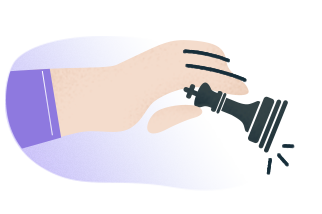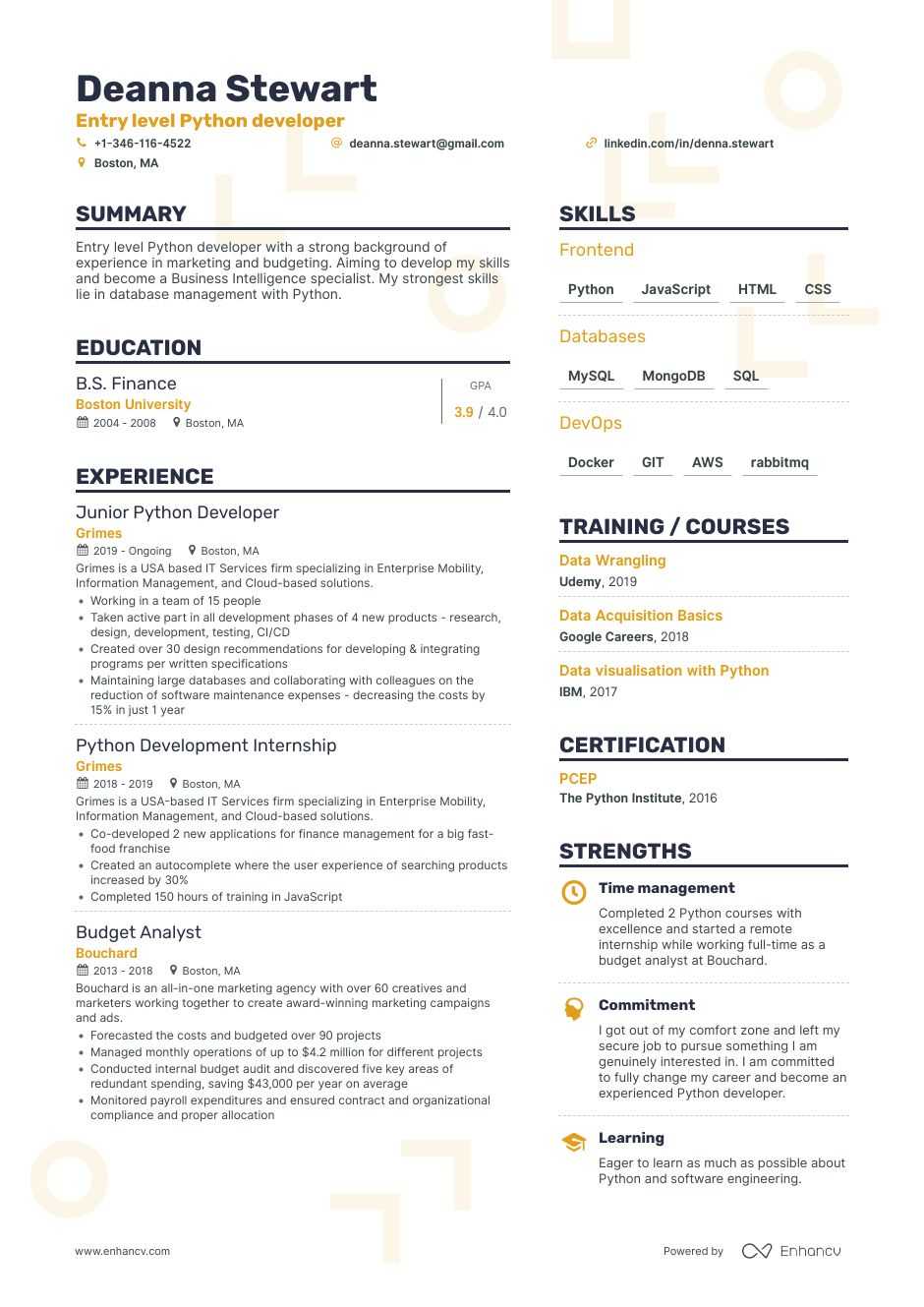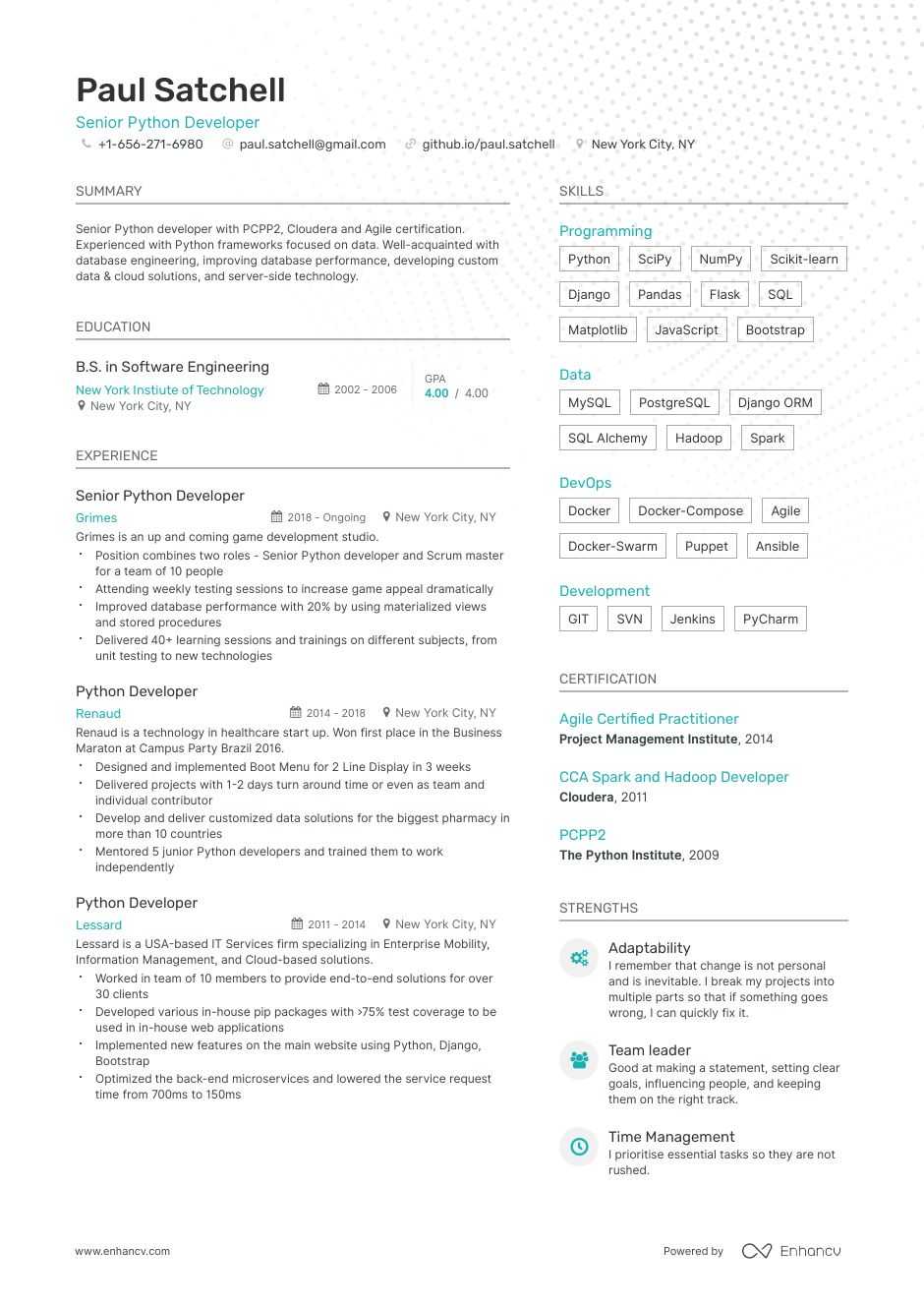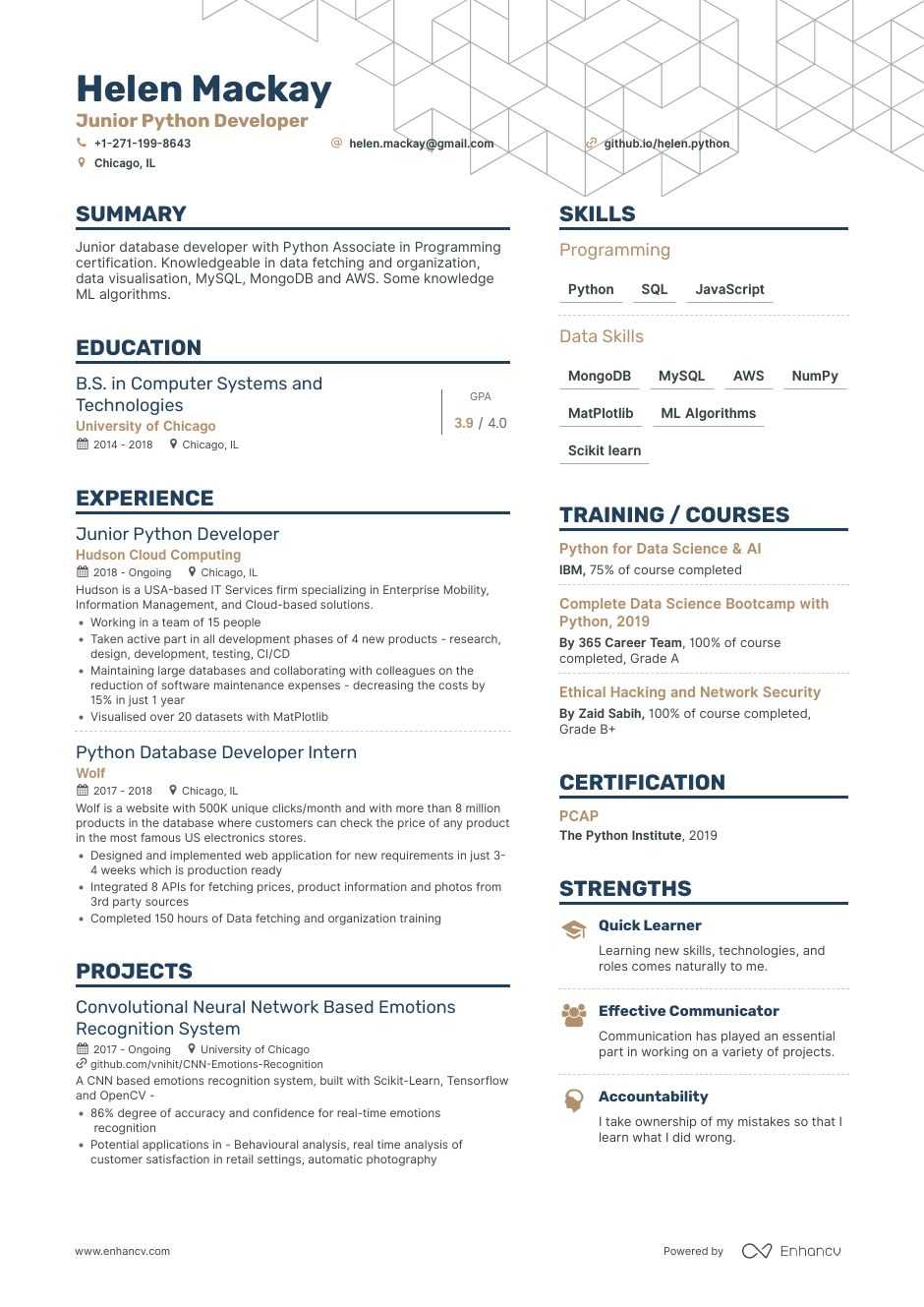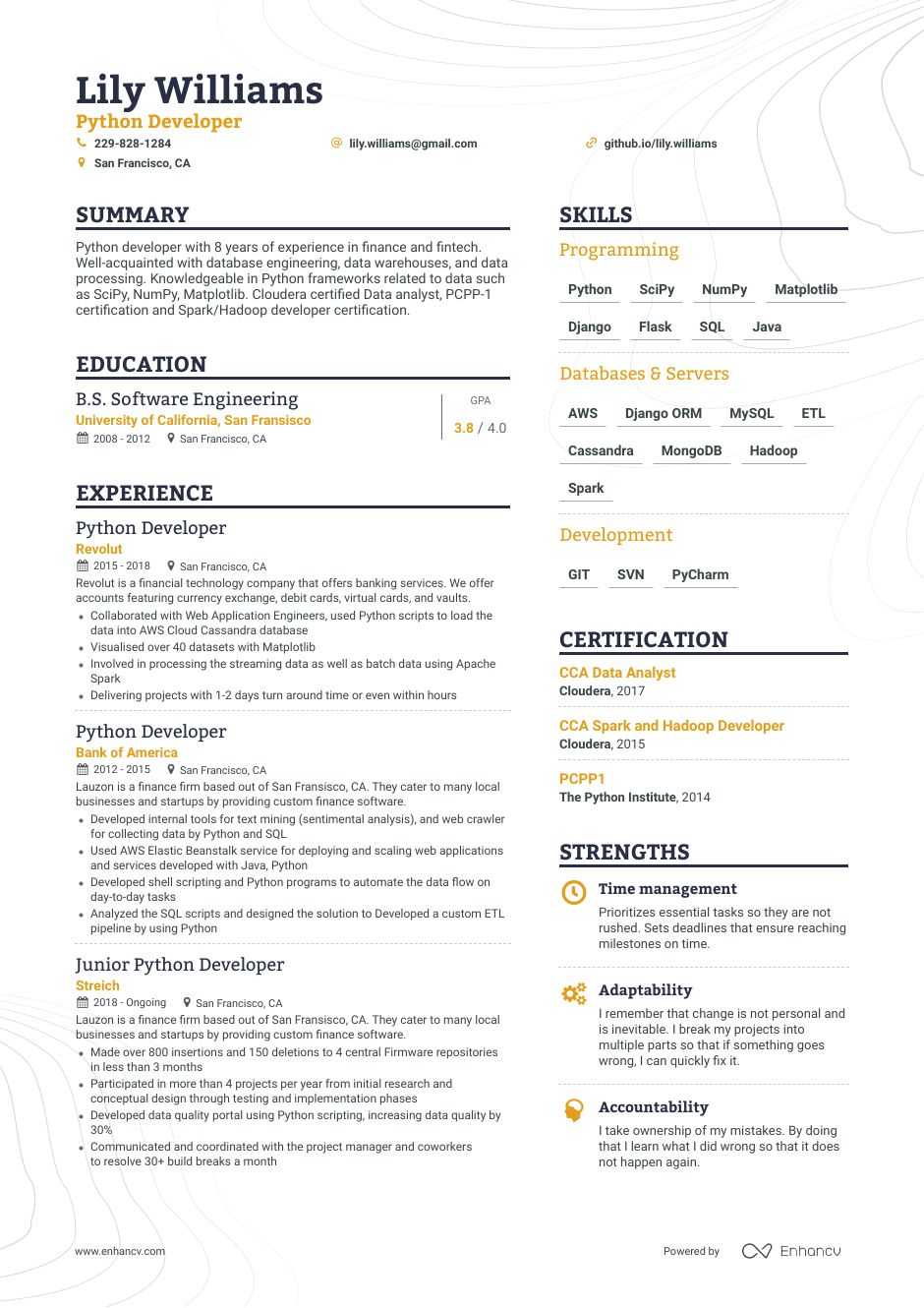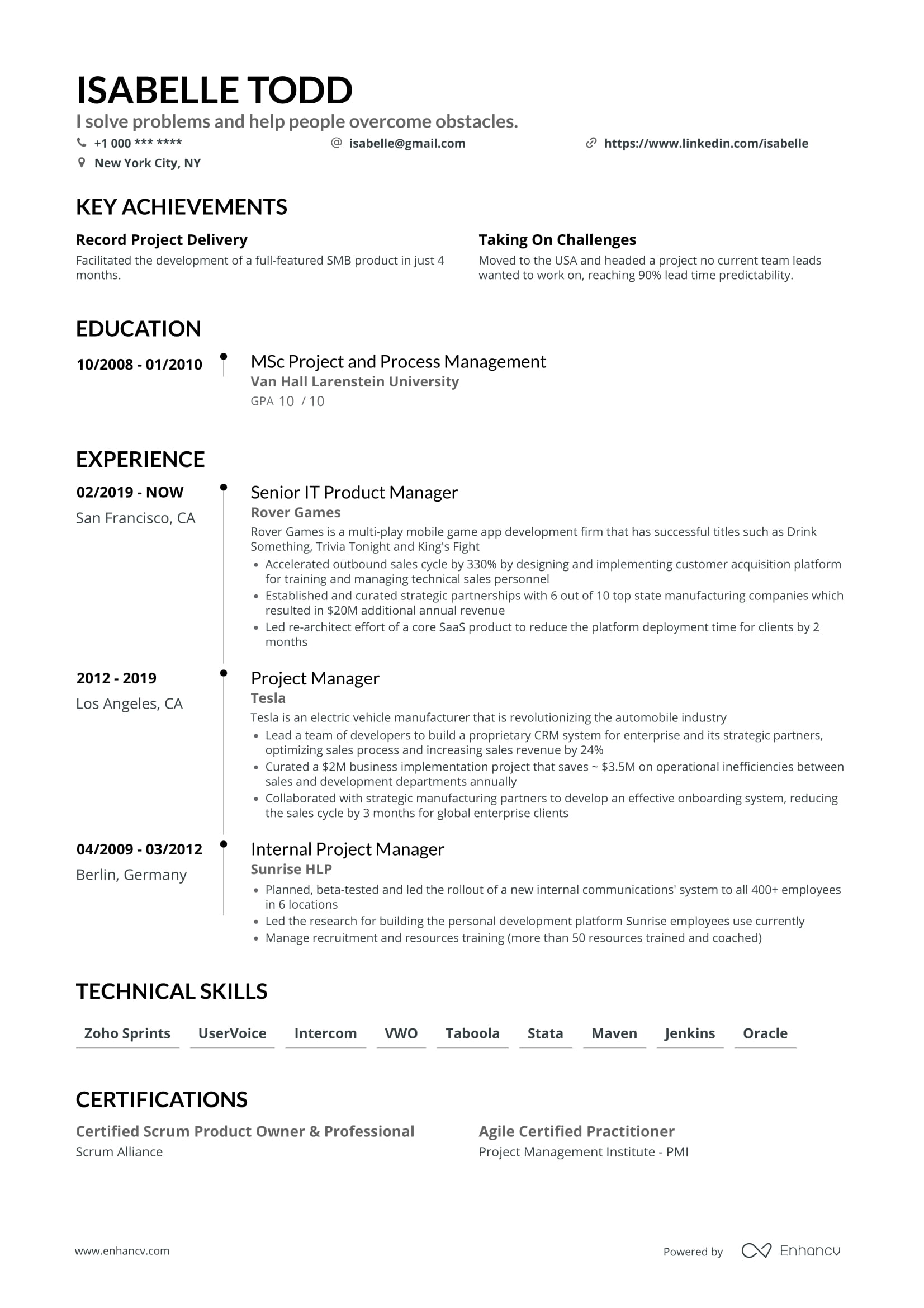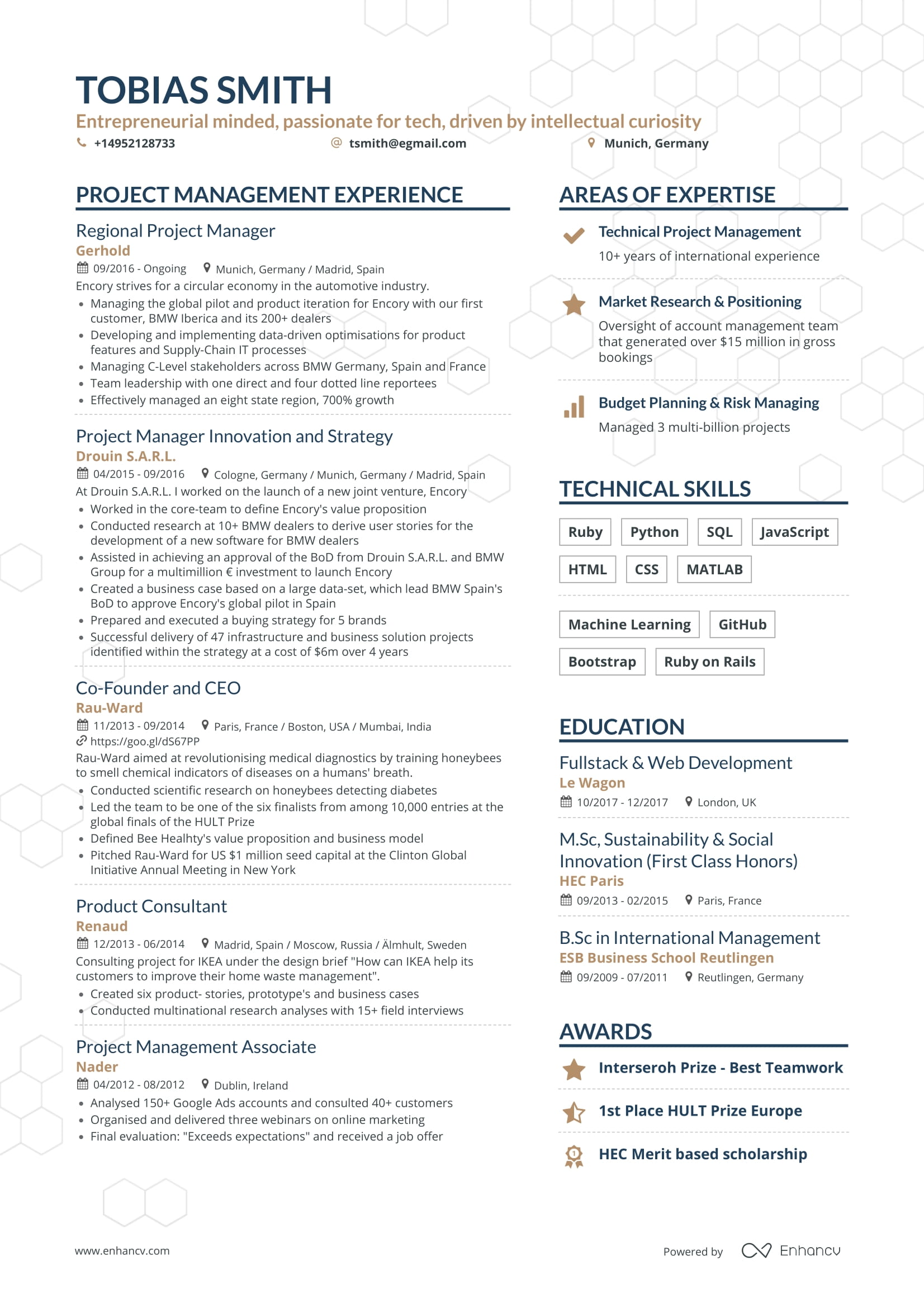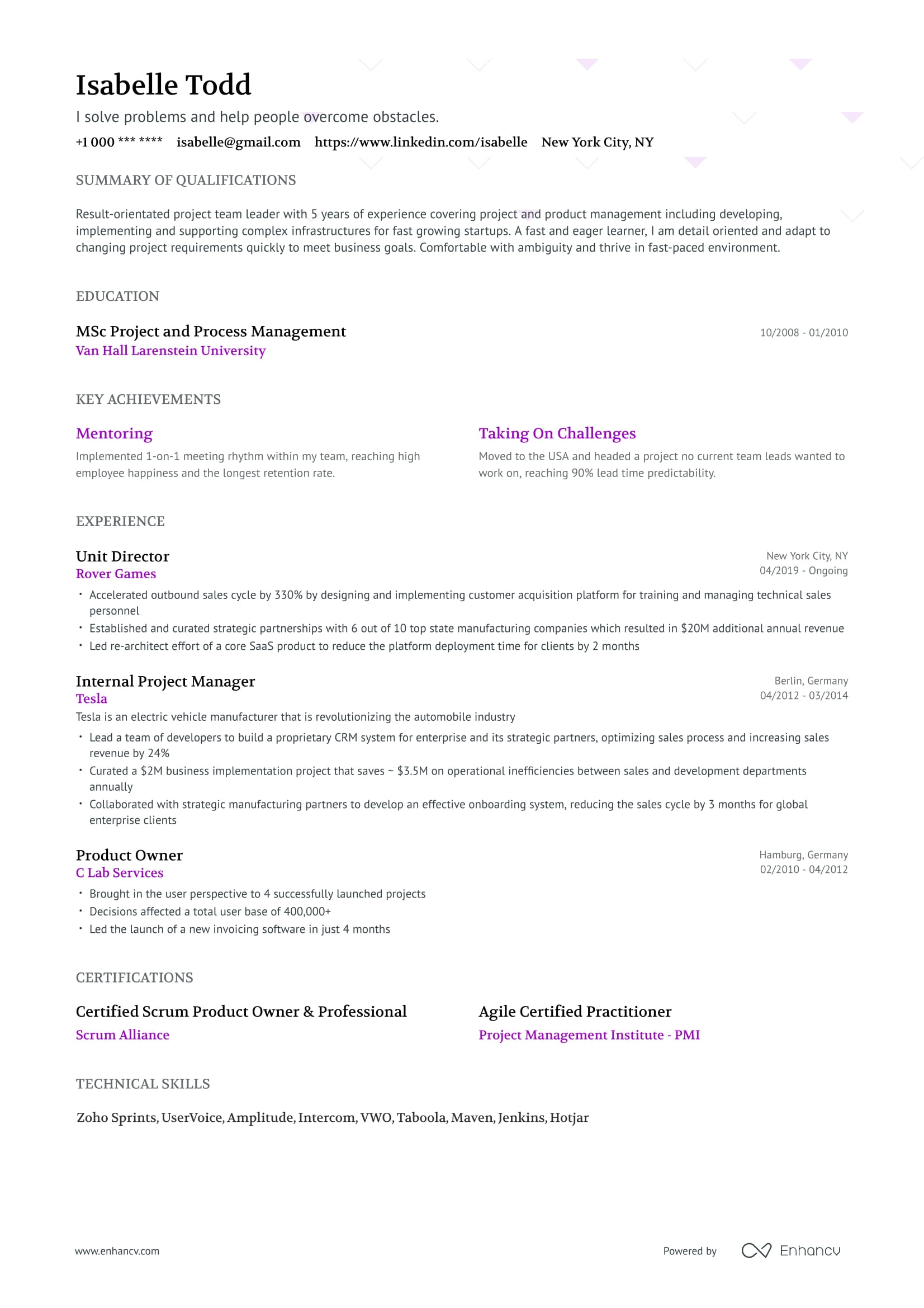Example Python Developer Resume - Browse more resume templates and build a stand-out resume
When a recruiter or a CTO looks at a python resume, their first instinct is to ensure they separate “wheat from chaff”.
A badly written resume can leave an impression that you are a Python dev who learned Python from a “Learn Python in 24 hours” book, and actually finished it in less than 24 hours.
But don’t worry, with these Python resume examples and our extensive guide, you’ll be able to write your Python resume as if you were Guido Van Rossum.
In this guide, you’ll see:
- 3 Python developer resume examples that would land a job every time
- How to add projects, resume skills and object on your resume
- How to put your resume experience and achievements on your resume
- Convert applications to more job interviews by writing the perfect Python resume
Once you finish reading this guide, you’ll find your resume completely reinvented.
Here are 3 amazing Python resume examples
Here are 3 amazing Python resume examples
Entry level Python developer resume
Senior Python developer resume
Junior Python developer resume
Feeling inspired?
Great!
Let’s now start writing your resume!
How to write a great Python developer resume?
When someone is going to spend as little as a few seconds judging your resume, you can’t afford to send across a cluttered, vague and irrelevant resume.
You saw that one page resume trending on Hackernews.
The two worded feedback from an anonymous Redditor said simply that your “resume sucks”.
Did you find that advice helpful at all?
No, right?
Because, that information was for a specific context, specific experience and may even be specific to a job.
In reality,
Entry level Python resumes have everything from C++ to Node.js listed in them. Making a recruiter feel that the resume is irrelevant.
Most senior Python dev’s resumes continue to contain the same old junior python dev content with a bit more information in the experience section.
What that tells you is that your resume should have a proper layout and should be the right fit for your experience and the job needs.
2 formats for a Python developer resume:
- Reverse chronological layout - Emphasizes your work experience like a timeline
- Functional layout - More focused on your skills, and doesn’t represent your story
Reverse chronological layout is best for most of the job applications. Especially when you have some form of work experience to show as a Python developer - even if it’s a small internship.
When it comes to Functional layout, we would suggest caution. Getting a functional resume layout right takes a lot more creativity and is risk prone.
But, a format alone isn’t going to get you the job.
5 tips to write a great Python developer resume
- Make sure to add Python frameworks, tools, project management skills within your resume.
- Display the scale of work and quality of code you wrote.
- Customize your resume to the job you’re applying for.
- Remove everything that’s not relevant to the Python job you’re applying for.
- Add your achievements, research papers, publishing and your open source projects.
Let’s now start building these resume sections.
The first section that we will look into is the resume header.
Writing a good Python developer’s resume header
Imagine a recruiter going through your resume header.
They see your name, then a bunch of information and then moves on to other sections.
And, that’s when you lost a huge opportunity to impress them.
Examples of good and bad Python resume header
The second example has been designed to perfection to make sure that hiring managers gets to know the best of you.
Imagine applying at a big name org as a junior Python dev. Now, if a recruiter opens your GitHub profile and sees that “green” heatmap throughout the year. You’ve made your impact!
That’s why you shouldn’t leave any space for errors, and should make sure to follow the basic resume header design.
As a rule of thumb, you should always include the following to your resume summary:
- Name
- Phone number
- Location (not your actual address)
- Your GitHub profile
- Your website (if you maintain one)
Writing a good Python resume objective or summary
Let’s first establish one thing - you are writing this resume for someone else to read.
When you write a resume summary without thinking what a recruiter wants, you write to boost your own ego and end up adding irrelevant stuff to your resume.
Here’s what a recruiter might look for in your resume summary:
- The total work experience - don’t make them add up broken chunks of Feb 2011-Jan, 2013 + Jan 2013-June 2016, etc
- Python frameworks you’re familiar with
- Whether you are a junior or senior dev
- Your passion or area of focus e.g. Financial applications, data pipelines, etc.
The word out there is that resume summary only applies to professionals that have a work experience.
Don’t let the lack of experience discourage you from writing an impactful resume summary.
Examples of good and bad resume summaries
Bad resume summary example
A good resume summary should look something like this:
In a nutshell, a good Python summary should:
- List your total Python experience
- Show what you’ve done with Python (projects/ industry/ application category)
- Mention if you’re a recognized speaker or if you maintain a local Python chapter
- Should mention if you have received any special awards
- Should contain notable open source project(s)
Resume summaries can also be incredibly powerful when you’re applying for a better position or are building a career change resume.
How to include Python experience on your resume
Honestly, a Python developer’s resume experience can easily be a book. But, no one except you is going to read that.
A few things to consider while writing your resume experience section:
- List what projects were done during your current and past employment
- Explain what technology stack was used (languages, frameworks, tools)
- Mention how you handled testing/Continuous integration/devops
- List the scale of the projects (number of customers, requests per second, read writes to database, LOC, etc.)
- Mention if you were responsible for the architecture and team management
This resume experience should be tweaked based on:
- Whether the job requires someone to do very specific things like “database modelling and design” or whether they want someone more generic.
For example, someone applying for a job that asks for specific things could involve an experience like:
Database modelling and design for a Walmart and end to end implementation of the warehouse application using Flask. My roles and responsibilities included:
- Database design and modelling to handle 100M requests per day
- Built API handling interfaces to add a layer of abstraction between Product APIs and 100s of customer APIs
- Built efficient record keeping with consistency and scale using a mix of MySQL, MongoDB and PostgreSQL clusters
Notice how the resume experience mentions database design and modelling? That’s what a hiring manager would notice too!
Examples of good and bad python resume experience
Let’s say you’re going to send your resume to Mark, the (fictional) Head of Development for Intercom. You wrote your resume experience like this:
What do you think would happen if Mark reads this? He’ll know what you worked through APIs, wrote some modules, etc. but nothing here that would tell him about the scale of your work, the impact you made or the team size you worked with.
Let’s try to write it a bit better.
Notice how the rewrite helps you stand out?
But, what if you aren’t applying to a job that demands wearing multiple hats and a lot more work than a traditional Enterprise role?
On average, a Python developer handles more than 10 responsibilities and handles 5+ projects (big and small) in a year. To make sure you write the best work experience here, you need to pick your best 5 that makes the cut.
Adding these resume points to your resume would lead to a winner resume for sure.
But, what if the job demands someone with a breath of experience? You have limited real estate on resume summary and experience sections.
The best way to add should more Python skills is by listing down on a Python resume skills section.
27 important Python resume skills that you may want to add
You have some (or all?) of them. All you need is a little inspiration. So, here’s a list of technical and soft skills that you might want to add to your resume:
22 Technical skills for your Python resume:
- Python
- Django
- Flask
- Tornado
- Git
- SQL
- AWS
- Azure
- Linux
- MySQL
- MongoDB
- PostgreSQL
- Apache
- Bash Scripting
- Javascript
- HTML/CSS3
- OpenCV
- Machine learning
- Numpy
- Scipy
- Front end frameworks (Angular, React, Knockout)
- Unit testing (unittest, pyunit, etc)
Soft skills that you should consider adding to your resume:
- Communication
- Team leadership
- Presentation skills
- Collaboration
- Research
When it comes to soft skills, too many underestimate what soft skills they really have.
If you happen to be stuck in such a situation, just run this list by a couple of your colleagues/friends and see what they feel.
Python projects, awards, and recognitions within your resume
Awards and certifications
- Cloudera Certified
- PCI Compliance Level 3
- Pycon 2019 Keynote
- Numpy core contributor
When a recruiter looks at this, they know for sure that this isn’t just an ordinary resume.
If you’ve worked hard, made open source contributions or launched a repo that went big on GitHub - you should add this section in your resume.
You’d be surprised to see how few resumes actually have this section.
Now, no one is going to tell you that they tossed off your resume just because you didn’t have an “awards” section in it.
When it comes to a resume design, lack of these sections leads to reduced confidence, and subsequent rejection. It’s something no one can easily point out, but can feel.
Your final takeaways:
- Focus on building a reverse chronological resume.
- Write a resume header that has the right contact information and links to your portfolio.
- Reflect your passion, achievements in your resume summary.
- Write a work experience that makes your resume memorable.
- List your awards and certifications in a separate section.
